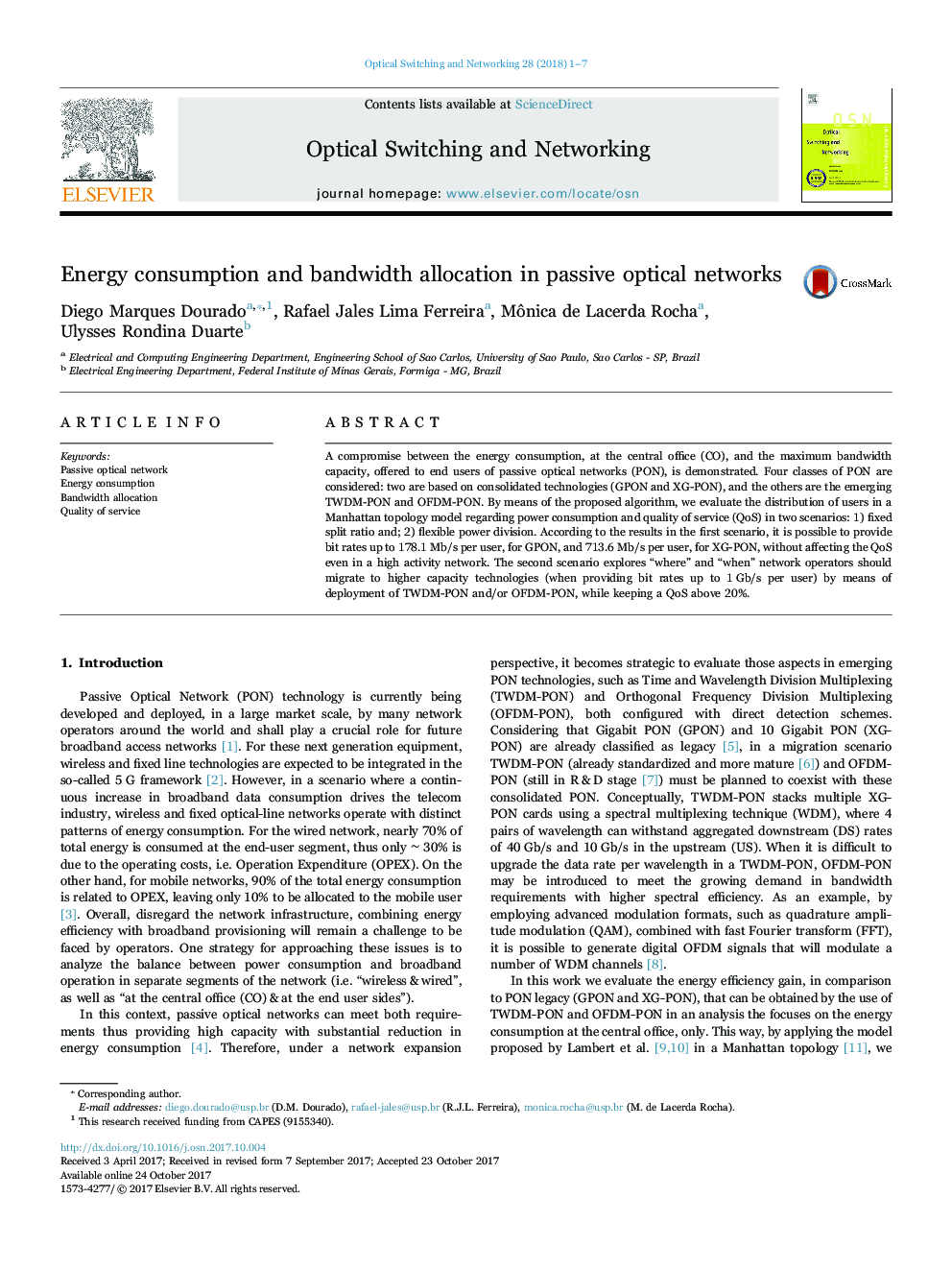| Article ID | Journal | Published Year | Pages | File Type |
|---|---|---|---|---|
| 6888449 | Optical Switching and Networking | 2018 | 7 Pages |
Abstract
A compromise between the energy consumption, at the central office (CO), and the maximum bandwidth capacity, offered to end users of passive optical networks (PON), is demonstrated. Four classes of PON are considered: two are based on consolidated technologies (GPON and XG-PON), and the others are the emerging TWDM-PON and OFDM-PON. By means of the proposed algorithm, we evaluate the distribution of users in a Manhattan topology model regarding power consumption and quality of service (QoS) in two scenarios: 1) fixed split ratio and; 2) flexible power division. According to the results in the first scenario, it is possible to provide bit rates up to 178.1Â Mb/s per user, for GPON, and 713.6Â Mb/s per user, for XG-PON, without affecting the QoS even in a high activity network. The second scenario explores “where” and “when” network operators should migrate to higher capacity technologies (when providing bit rates up to 1Â Gb/s per user) by means of deployment of TWDM-PON and/or OFDM-PON, while keeping a QoS above 20%.
Related Topics
Physical Sciences and Engineering
Computer Science
Computer Networks and Communications
Authors
Diego Marques Dourado, Rafael Jales Lima Ferreira, Mônica de Lacerda Rocha, Ulysses Rondina Duarte,
